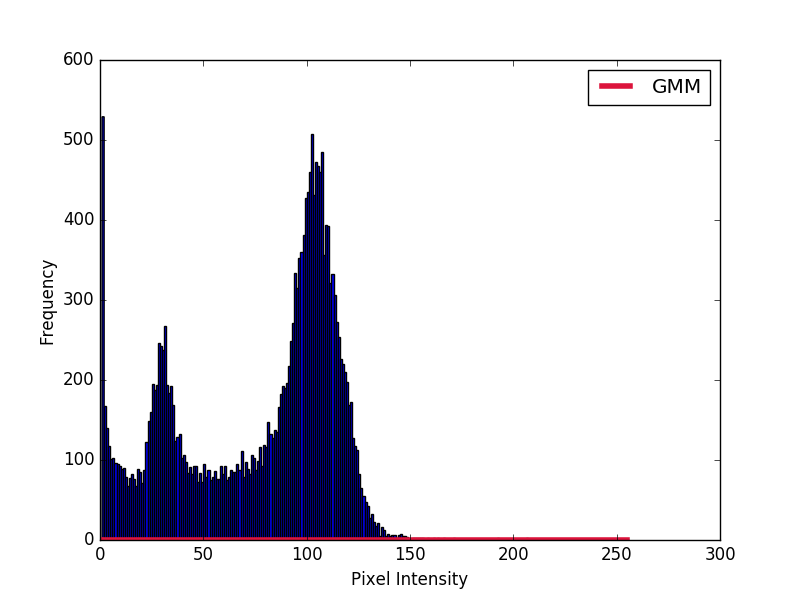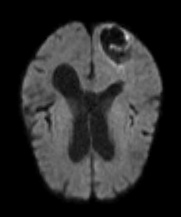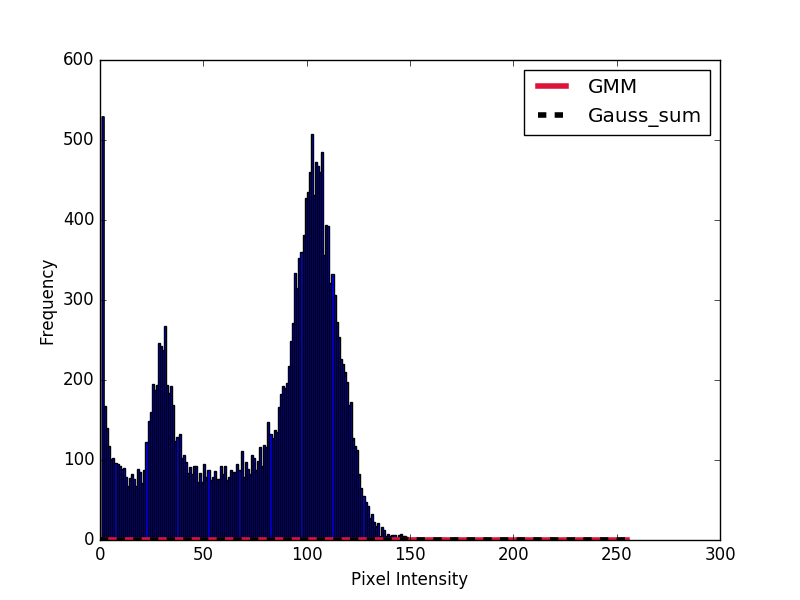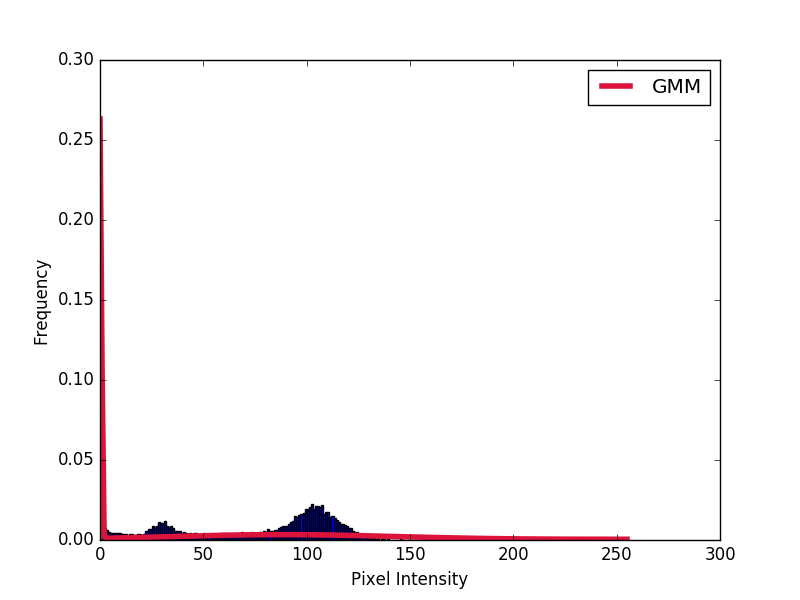I am attempting to do automatic image segmentation of the different regions of a 2D MR image based on pixel intensity values. The first step is implementing a Gaussian Mixture Model on the image's histogram.
I need to plot the resulting gaussian obtained from the score_samples method onto the histogram. I have tried following the code in the answer to (Understanding Gaussian Mixture Models).
However, the resulting gaussian fails to match the histogram at all. How do I get the gaussian to match the histogram?

import numpy as np
import cv2
import matplotlib.pyplot as plt
from sklearn.mixture import GaussianMixture
# Read image
img = cv2.imread("test.jpg",0)
hist = cv2.calcHist([img],[0],None,[256],[0,256])
hist[0] = 0 # Removes background pixels
# Fit GMM
gmm = GaussianMixture(n_components = 3)
gmm = gmm.fit(hist)
# Evaluate GMM
gmm_x = np.linspace(0,255,256)
gmm_y = np.exp(gmm.score_samples(gmm_x.reshape(-1,1)))
# Plot histograms and gaussian curves
fig, ax = plt.subplots()
ax.hist(img.ravel(),255,[1,256])
ax.plot(gmm_x, gmm_y, color="crimson", lw=4, label="GMM")
ax.set_ylabel("Frequency")
ax.set_xlabel("Pixel Intensity")
plt.legend()
plt.show()
I also attempted manually constructing the gaussians with sums.
import numpy as np
import cv2
import matplotlib.pyplot as plt
from sklearn.mixture import GaussianMixture
def gauss_function(x, amp, x0, sigma):
return amp * np.exp(-(x - x0) ** 2. / (2. * sigma ** 2.))
# Read image
img = cv2.imread("test.jpg",0)
hist = cv2.calcHist([img],[0],None,[256],[0,256])
hist[0] = 0 # Removes background pixels
# Fit GMM
gmm = GaussianMixture(n_components = 3)
gmm = gmm.fit(hist)
# Evaluate GMM
gmm_x = np.linspace(0,255,256)
gmm_y = np.exp(gmm.score_samples(gmm_x.reshape(-1,1)))
# Construct function manually as sum of gaussians
gmm_y_sum = np.full_like(gmm_x, fill_value=0, dtype=np.float32)
for m, c, w in zip(gmm.means_.ravel(), gmm.covariances_.ravel(), gmm.weights_.ravel()):
gauss = gauss_function(x=gmm_x, amp=1, x0=m, sigma=np.sqrt(c))
gmm_y_sum += gauss / np.trapz(gauss, gmm_x) * w
# Plot histograms and gaussian curves
fig, ax = plt.subplots()
ax.hist(img.ravel(),255,[1,256])
ax.plot(gmm_x, gmm_y, color="crimson", lw=4, label="GMM")
ax.plot(gmm_x, gmm_y_sum, color="black", lw=4, label="Gauss_sum", linestyle="dashed")
ax.set_ylabel("Frequency")
ax.set_xlabel("Pixel Intensity")
plt.legend()
plt.show()




